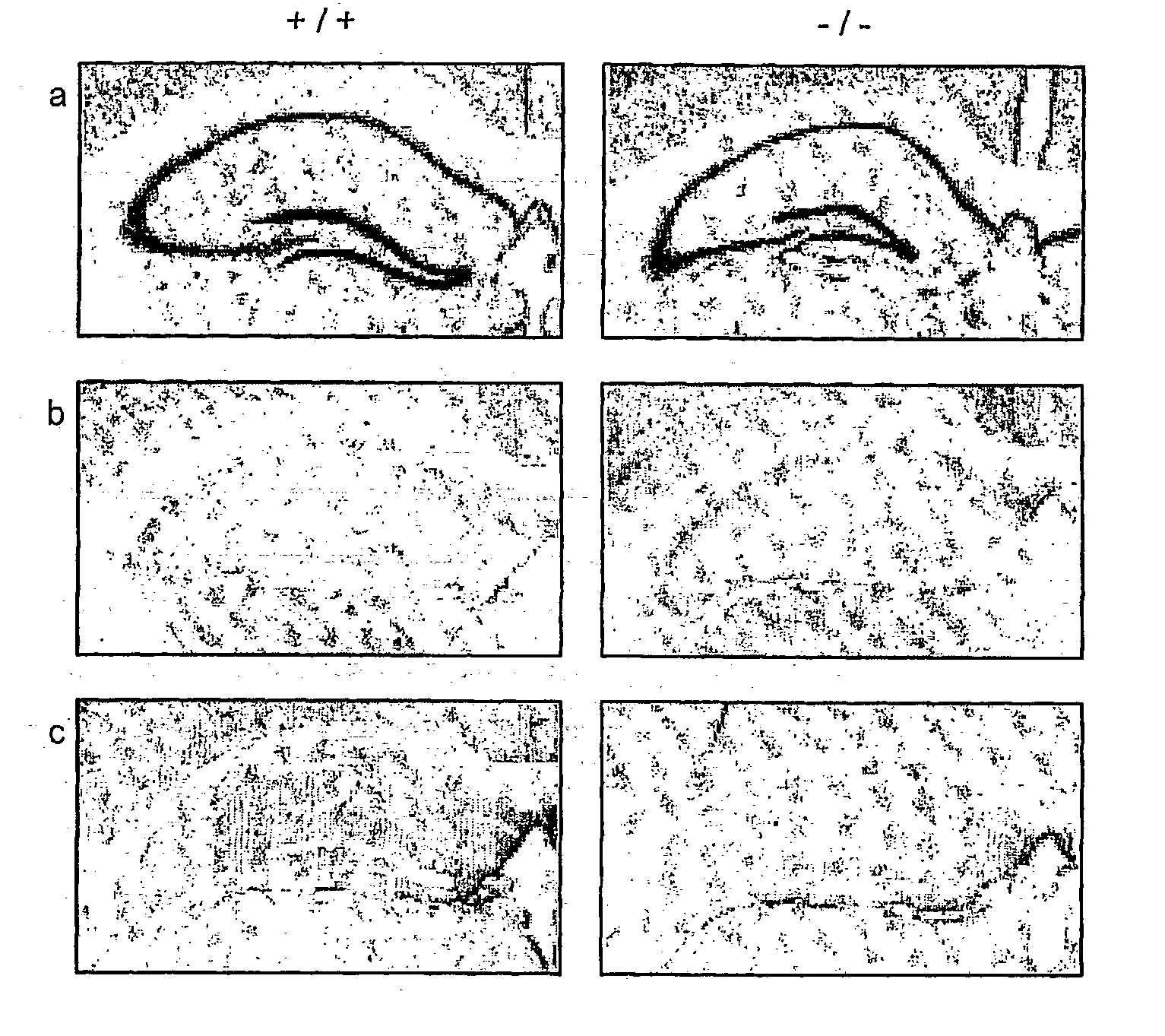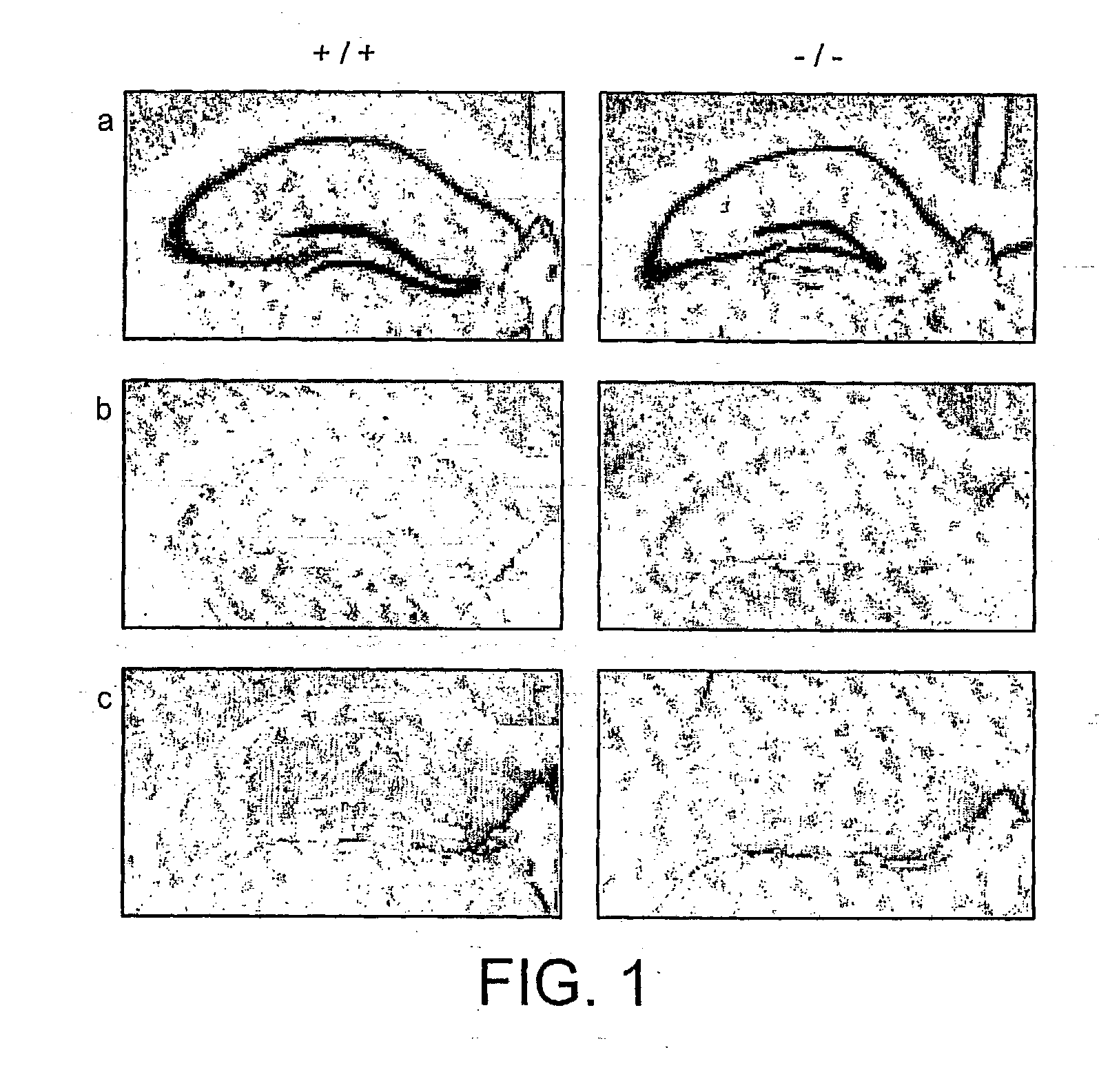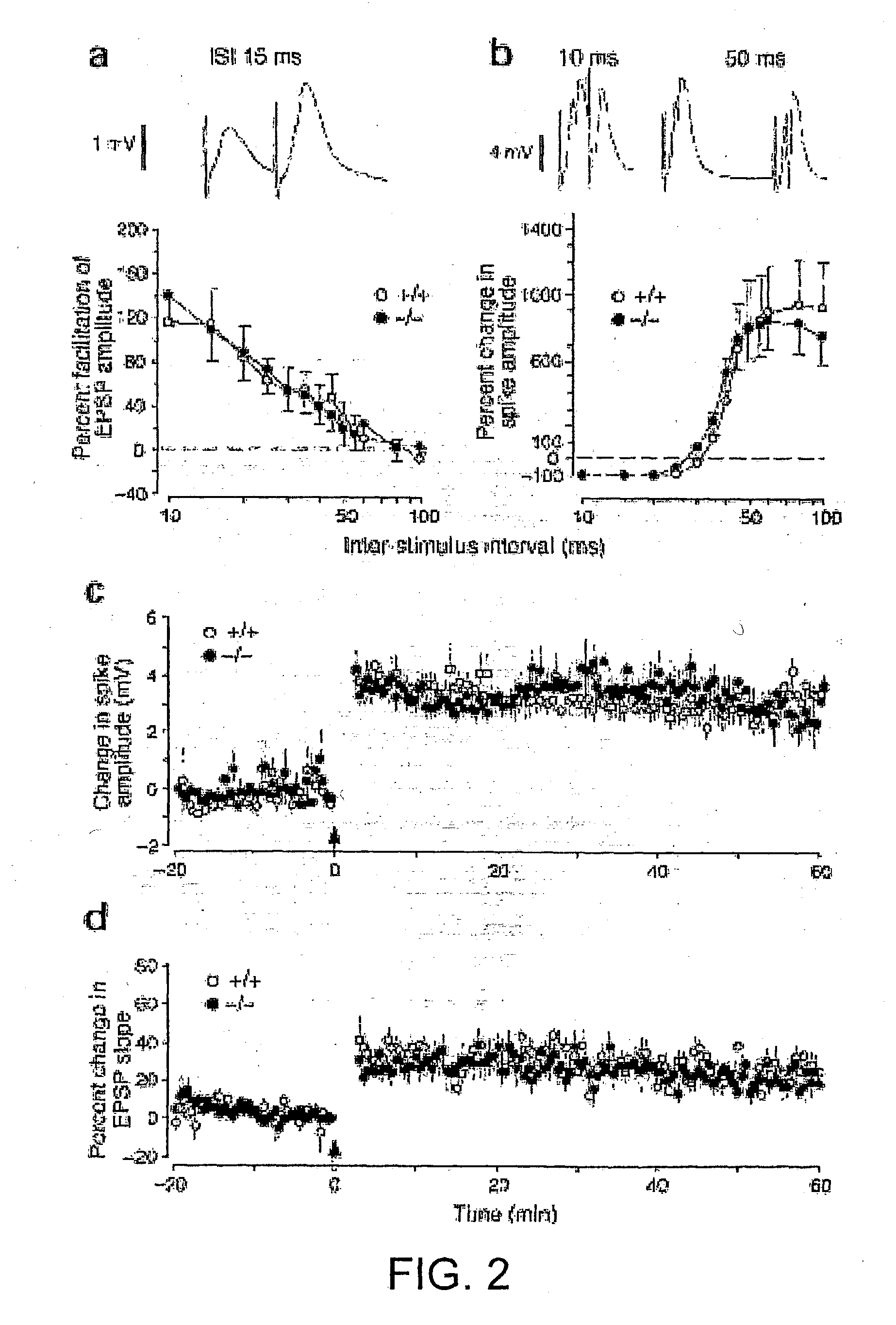Synaptic transmission assay
a technology of synaptic transmission and assay, applied in the field of synaptic transmission assay, can solve the problems of no effective treatment for such disorders, lack of efficient model to identify potential treatments, and devastation to the quality of li
- Summary
- Abstract
- Description
- Claims
- Application Information
AI Technical Summary
Benefits of technology
Problems solved by technology
Method used
Image
Examples
example 2
[0148] Chemical Induction of LTP is Accompanied by Zif268 Expression
[0149] In order to assess the relationship between chemical LTP induction and zif268 expression, native zif268 expression was analysed in a number of experimental systems which model in vivo LTP induction.
[0150] zif268 Expression in Hippocampal Slices
[0151] In situ hybridisation was performed against sections cut from hippocampal slices that had been exposed in vitro to the LTP-induction medium (or control ACSF) for 10 min then fixed 30 min later before sectioning and hybridising with radioactive zif268 antisense probe. The induction medium: consists of: NaHCO.sub.3, 24 mM; glucose, 10 mM; KH.sub.2PO.sub.4, 1.25 mM; MgCl.sub.2, 0.1 mM; KCl, 5 mM; NaCl, 95 mM; CaCl.sub.2, 5 mM; tetraethylammonium 25 mM, with pH adjusted to 7.4 Film overlays, after suitable exposure time, were quantified by densitometric scanning of the indicated hippocampal region. Zif268 mRNA is elevated by induction medium in dentate gyrus, as afte...
example 3
[0156] Chemical Induction of LTP is Detected by Zif268 Immunocytochemical Assay
[0157] Hippocampal neurons were prepared from late embryonic or 1.sup.st postnatal day Sprague-Dawley rates, and grown in dissociated cell culture in microtitre plates. After 7-21 days in vitro, serum-containing medium was replaced with serum-free medium for 24 h. This medium was then replaced with ACSF or with induction medium for 10 minutes; these solutions were then replaced with serum-free medium. After 1 hour, cells were fixed by replacement of serum-free medium with phosphate-buffered saline containing 4% paraformaldehyde. Immunolabelling was then carried out with rabbit antiserum against zif268 and mouse antibodies against the neuron-specific antigen NeuN. After washing, bound antibodies were visualised by incubation with Alexa488-labelled anti-rabbit IgG and Cy3-labelled anti-mouse IgG (FIG. 12 top). LTP induction led to an approximately; four-fold increase in the incidence of double-labelled cell...
example 4
[0158] Chemical Induction of LTP is Detected by Zif268 / .beta.-Galactosidas-e Assay
[0159] Dissociated hippocampal neuronal cultures were prepared from embryonic wild-type and embryonic - / - and + / - zif268 knockout mice of the line used in Example 1. As noted above, the mutation in these animals involved the insertion of a lacZ-neo cassette containing a polyadenylation site between the promoter and its coding sequence, which caused the lacZ gene to be transcribed in place of the zif268 gene. Cells were treated as in Example 3, but 2 or 4 hours after exposure to induction medium or ACSF control, cells were solubilized, and levels of .beta.-Galactosidase were determined by incubation with the chromogenic .beta.-Galactosidase substrate, X-gal, according to standard methods, and expressed in terms of total protein (FIG. 13). As above, LTP induction was detected as a significant increase in .beta.-Galactosidase 2 h after exposure to the induction medium.
PUM
| Property | Measurement | Unit |
|---|---|---|
| Fluorescence | aaaaa | aaaaa |
| Luminescence | aaaaa | aaaaa |
Abstract
Description
Claims
Application Information
 Login to View More
Login to View More - R&D
- Intellectual Property
- Life Sciences
- Materials
- Tech Scout
- Unparalleled Data Quality
- Higher Quality Content
- 60% Fewer Hallucinations
Browse by: Latest US Patents, China's latest patents, Technical Efficacy Thesaurus, Application Domain, Technology Topic, Popular Technical Reports.
© 2025 PatSnap. All rights reserved.Legal|Privacy policy|Modern Slavery Act Transparency Statement|Sitemap|About US| Contact US: help@patsnap.com



